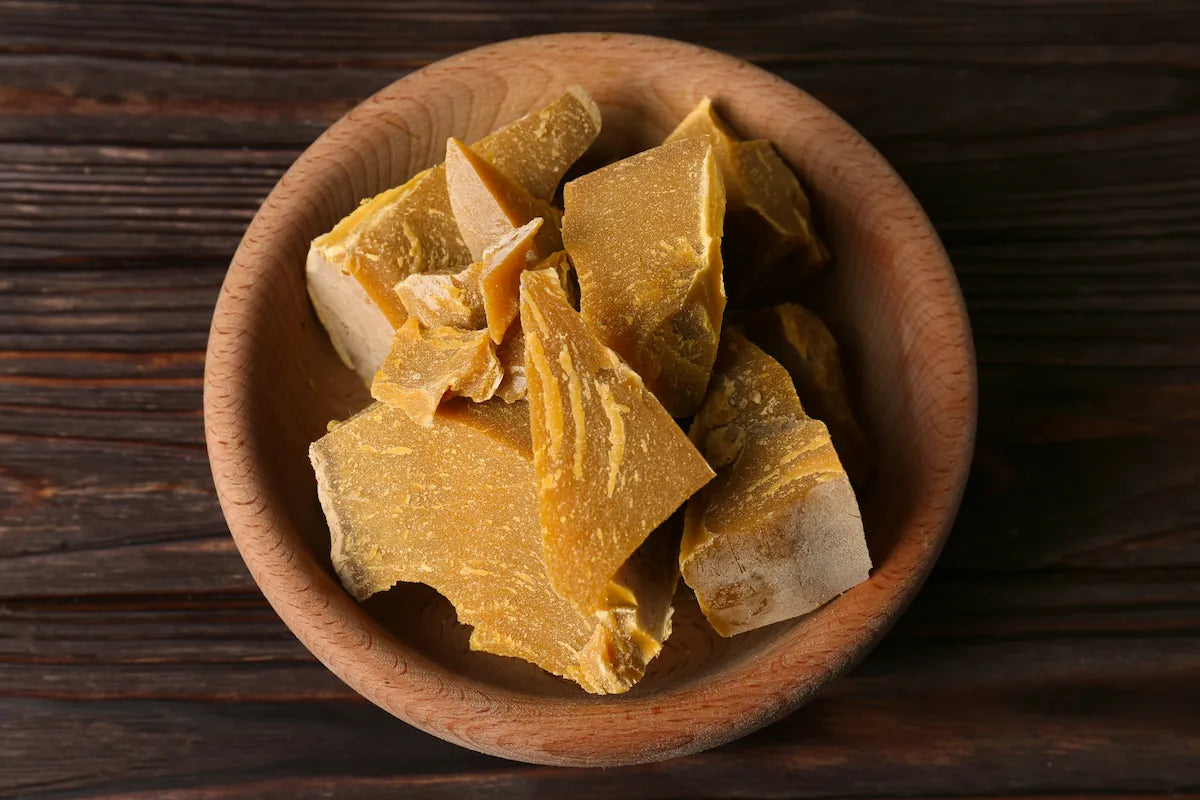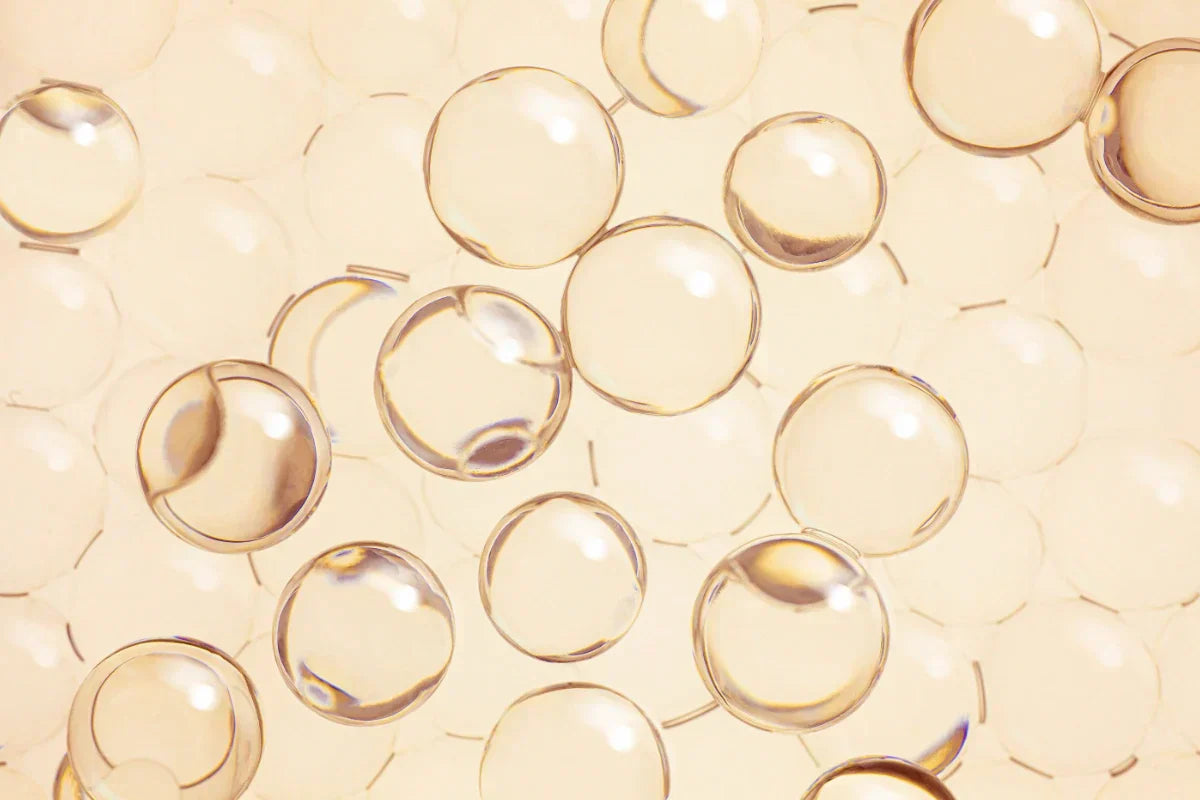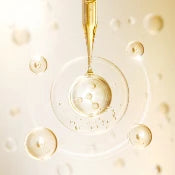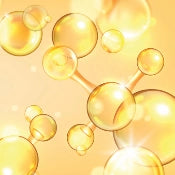The Best Waxes for Every Purpose: A Comprehensive Guide
In the diverse world of organic compounds, waxes stand out for their versatility and wide-ranging applications. From the glossy finish on your car to the protective coating on fruits at your local grocery store, waxes work silently behind the scenes in countless products we encounter daily. This comprehensive guide explores the fascinating world of waxes, including their types, properties, applications, and significance across various industries.
Introduction to Waxes
Waxes are organic compounds with a hydrophobic nature, consisting of long-chain aliphatic hydrocarbons and various functional groups, including esters, fatty acids, and alcohols. Waxes are a subclass of lipids, and their main constituents are esters formed from fatty acids and fatty alcohols. This unique chemical structure gives waxes their characteristic properties: they repel water, remain malleable at room temperature, and have relatively high melting points compared to similar compounds.
The origins of waxes fall into two main categories. Natural waxes are derived from plants (like carnauba and candelilla) or animals (such as beeswax and lanolin), while synthetic waxes are produced from petroleum or through chemical processes to create substances like polyethylene wax. The ester linkage in waxes is specifically formed between a fatty acid and a fatty alcohol, which contributes to the physical properties and applications of natural waxes.
What makes waxes particularly valuable across industries is their ability to:
- Form protective coatings
- Control evaporation of moisture
- Enhance texture and consistency
- Provide gloss or matte finishes
- Create effective barriers against environmental factors
When selecting a wax for a specific application, key considerations include the melting point, hardness, texture, compatibility with other ingredients, and, increasingly, environmental factors such as biodegradability.
Types of Waxes
Waxes can be classified in multiple ways, with the most common distinction being between natural waxes and synthetic waxes. Among natural waxes, plant waxes include a major group known as vegetable waxes, which are plant-derived and widely used for protective coatings on plant surfaces. Animal waxes, on the other hand, are of animal origin, such as beeswax and lanolin. Each category encompasses numerous subtypes with distinct properties and applications.
Natural Waxes
Natural waxes include both plant waxes and animal waxes. They typically exist as esters of fatty acids and long chain fatty alcohols, which gives them certain structural and protective properties. The acid value is an important parameter for characterizing both plant and animal origin waxes, as it helps determine their quality and suitability for cosmetic formulations. Waxes have hydrophobic properties that help prevent evaporation in plants and animals.
Plant-based waxes include:
- Carnauba wax (from the Brazilian palm)
- Candelilla wax (from a Mexican shrub)
- Rice bran wax (used in lipsticks to inhibit syneresis, which is the expulsion of liquid from the formulation's internal structure)
- Jojoba wax (technically a liquid wax)
Animal waxes (of animal origin) include:
- Beeswax (perhaps the best known animal wax)
- Lanolin (from sheep’s wool)
- Spermaceti (from marine animals)
- Shellac wax (from the lac insect)
Animal waxes typically consist of wax esters derived from fatty acids and carboxylic alcohols.
- Beeswax (perhaps the best known animal wax)
- Lanolin (from sheep’s wool)
- Spermaceti (from marine animals)
- Shellac wax (from the lac insect)
Natural waxes have complex compositions that often include various hydrocarbons, esters, fatty acids, and alcohols. This complexity contributes to their specific properties and applications. Waxes are predominantly composed of long-chain hydrocarbons, which are made up of carbon and hydrogen atoms.
Synthetic Waxes
Synthetic waxes are manufactured products derived primarily from petroleum or through chemical synthesis. They include:
- Polyethylene waxes
- Paraffin waxes
- Fischer-Tropsch waxes
- Montan waxes (semi-synthetic, derived from lignite)
Unlike many natural waxes, synthetic varieties often consist primarily of long chain hydrocarbons without the additional functional groups found in plant and animal waxes. This gives them different melting behaviors, stability profiles, and compatibility characteristics.

Mineral Waxes
Mineral waxes represent a third category that includes:
- Paraffin wax (derived from petroleum)
- Microcrystalline wax (a refined petroleum wax)
- Ozokerite (a naturally occurring mineral wax)
While some classification systems include mineral waxes under synthetic categories, they have unique properties that sometimes warrant separate consideration.
Plant-Derived Waxes
Plant waxes are characterized by their hard, brittle texture and relatively high melting points, properties that stem from their unique chemical composition of long-chain hydrocarbons and functional groups like esters, fatty acids, and alcohols. Vegetable waxes are a key group of plant waxes that serve protective functions on plant surfaces, including controlling evaporation and regulating wettability. The viscosity of plant waxes also influences their use in cosmetic and industrial formulations, affecting texture, stability, and application properties.
Carnauba Wax
Carnauba wax, obtained from the leaves of the Brazilian palm Copernicia prunifera, is often called the “queen of waxes” due to its exceptional properties. It has:
- The highest melting point (82-86°C) among natural waxes
- Excellent hardness and brittleness
- Superior glossing capabilities
- Strong water resistance
- FDA approval for food contact
Carnauba wax is derived from the leaves of the Brazilian palm and is used in cosmetics for its hardness and ability to reduce stickiness.
- The highest melting point (82-86°C) among natural waxes
- Excellent hardness and brittleness
- Superior glossing capabilities
- Strong water resistance
- FDA approval for food contact
These properties make carnauba wax invaluable in automotive polishes, food coatings, cosmetics, and pharmaceutical applications. The carnauba palm produces this wax as a natural defense mechanism against the intense tropical climate, and the extraction process involves harvesting and drying the leaves before removing the wax.
Candelilla Wax
Candelilla wax comes from the Euphorbia antisyphilitica shrub native to northern Mexico and the southwestern United States. This plant-based wax offers:
- A moderate melting point (68-72°C)
- Good hardness, though less brittle than carnauba
- Excellent film-forming properties
- Compatibility with many oils and other waxes
Candelilla wax is derived from the leaves of the Mexican shrub Euphorbia cerifera and is known for its low stickiness compared to beeswax.
- A moderate melting point (68-72°C)
- Good hardness, though less brittle than carnauba
- Excellent film-forming properties
- Compatibility with many oils and other waxes
Candelilla wax is particularly valued in cosmetic formulations for lipsticks, as a binding agent in chewing gum, and as a surface treatment for citrus fruits and confectionery. Its extraction involves boiling the plant stems in acidified water, which separates the wax for collection. Alcohol can also be used to extract remaining resins and waxes from the plant material during the process.
The increasing demand for plant-based wax options stems from their renewable nature, biodegradability, and natural origin, making them particularly attractive for “clean” formulations in cosmetics and food applications.
Synthetic Waxes
Synthetic waxes are produced from petroleum derivatives or through chemical polymerization processes. These waxes offer consistency, customizable properties, and often lower costs compared to their natural counterparts. Carnauba wax is a sustainable product in its production, but it faces ecological challenges.
Polyethylene Wax
Polyethylene wax is one of the most widely produced synthetic waxes, manufactured through the polymerization of ethylene. Its key attributes include:
- Adjustable melting points (typically 80-130°C)
- Excellent abrasion resistance
- Good chemical stability
- Compatibility with many raw materials
- Uniform composition
These properties make polyethylene wax particularly valuable in packaging, plastics manufacturing, hot melt adhesives, and as a processing aid in numerous industrial applications. Unlike natural waxes with their complex mixtures of compounds, polyethylene wax has a more predictable composition, allowing for more consistent performance in formulations.
Montan Wax
Montan wax, derived from lignite coal deposits, bridges the gap between fully synthetic and natural waxes. Often called “lignite wax” or “German wax,” it offers:
- High melting point (82-95°C)
- Excellent hardness
- Good polishing properties
- Strong adhesive characteristics
- Compatibility with many other waxes and resins
These properties make montan wax suitable for car polishes, shoe creams, electrical insulation, and various industrial coatings. The extraction process involves treating lignite with solvents to extract the wax, followed by refining steps to improve color and remove impurities.
The absence of polar functional groups in many synthetic waxes imparts desirable thermal and oxidative stability, making them suitable for demanding industrial applications. However, the sustainability and environmental impact of synthetic waxes have become subjects of scrutiny, with regulatory trends and consumer preferences shifting toward bio-based alternatives where performance permits.

Cosmetic Applications
In cosmetics, waxes serve as structural agents, emollients, and texture enhancers, providing products with their desired consistency, spreadability, and skin feel. Waxes are also used to adjust the viscosity of cosmetic formulations, which directly influences the texture and stability of products like creams, lotions, and emulsions. The cosmetic industry relies heavily on waxes for formulations ranging from lipsticks to creams and lotions.
Lip Products
Lipsticks, lip balms, and glosses rely on carefully balanced wax formulations:
- Beeswax provides structure and emollience
- Carnauba wax adds hardness and gloss
- Candelilla wax improves oil binding and stability
- Synthetic waxes may be used to achieve specific textures or production requirements
A typical lipstick might contain 15-30% waxes, with the ratio between hard wax (like carnauba) and soft wax (like beeswax) determining the final firmness and application feel. The melting point of the wax blend is crucial; it must be high enough to maintain product stability at room temperature but low enough to melt upon contact with lips.
Creams and Lotions
In emulsion-based products like creams and lotions, waxes contribute to:
- Thickening and stability of the formulation
- Enhanced skin feel and texture
- Moisture retention properties
- Protective barrier formation on the skin
Candelilla wax is used to adjust viscosity in water-in-oil emulsions and imparts gloss and hardness in cosmetic products.
- Thickening and stability of the formulation
- Enhanced skin feel and texture
- Moisture retention properties
- Protective barrier formation on the skin
Beeswax is particularly valued in natural cosmetic formulations for its compatibility with the skin and ability to form protective yet breathable films. The trend toward “natural” and “clean” beauty has accelerated the use of plant-based and minimally processed animal waxes in formulations.
Mascaras and Eye Products
Mascaras rely heavily on waxes for:
- Film formation around lashes
- Water resistance
- Flexibility and durability
- Thickening effects
Beeswax, carnauba, and synthetic waxes like polyethylene are commonly used in mascara formulations, each contributing specific properties to the final product.
Pharmaceutical Applications
Pharmaceutical formulations employ waxes mainly as bases and structuring agents in ointments, creams, suppositories, and controlled-release preparations. The properties of waxes, such as their low solubility in water, emollient action, and ability to form occlusive barriers, make them ideal for topical drug delivery systems.
Topical Preparations
In ointments and creams, waxes serve multiple functions:
- Creating a protective barrier that keeps active ingredients in contact with the skin
- Controlling the rate of drug release
- Enhancing stability of the formulation
- Improving texture and application properties
Beeswax and petrolatum (a semi-solid mixture of hydrocarbons) are commonly used bases for medicinal ointments. White wax (bleached beeswax) is preferred in many pharmaceutical formulations due to its neutral color and odor.
Controlled Release Systems
Waxes play a crucial role in designing controlled-release drug delivery systems:
- Their hydrophobic nature can help control the release rate of active ingredients
- The melting point can be used to trigger release at specific temperatures
- Their ability to form matrices can encapsulate drugs for extended release
Carnauba wax, beeswax, and various synthetic waxes are used in matrix-type tablets and microparticles to achieve predetermined drug release profiles. The choice of wax and its proportion in the formulation directly affects the dissolution rate and, consequently, the bioavailability of the active pharmaceutical ingredient.
Food Preservation
Waxes play a crucial role in food preservation by creating protective coatings that control evaporation, prevent moisture loss, and extend the shelf life of various fruits and vegetables. The food industry uses waxes extensively as surface treatments and ingredients. Paraffin waxes are also widely used in foods for packaging, coatings, and products like cheese wrapping and chewing gum, highlighting their safety and versatility in food-related applications.
Fruit and Vegetable Coatings
The application of edible waxes to produce serves multiple purposes:
- Reducing water loss and dehydration
- Slowing respiration rates, which delays ripening
- Creating a barrier against microorganisms
- Enhancing appearance with a glossy finish
- Protecting against physical damage during handling
Carnauba wax, beeswax, and candelilla wax are commonly used for this purpose due to their natural origin, safety profile, and effective barrier properties. These waxes are typically applied as thin coatings, often just a few microns thick, yet provide significant protection that can extend shelf life by days or even weeks.
Confectionery Applications
In confectionery, waxes serve as:
- Glazing agents for candies and chocolate
- Anti-sticking agents for gummy products
- Moisture barriers for sugar-coated items
- Texture modifiers in chewing gum
Beeswax and carnauba wax are commonly used in chocolate coatings to prevent bloom (the whitish appearance that develops when cocoa butter crystallizes on the surface). Candelilla wax is a major component in many chewing gum formulations, providing the desired texture and chewability. Food-grade waxes must meet strict regulatory requirements. The FDA and similar agencies worldwide have established acceptable daily intake levels and usage guidelines for waxes in food applications.

Functional Significance of Waxes
Beyond their commercial applications, waxes serve critical biological functions in both plants and animals, providing essential protection and adaptation mechanisms.
Plant Cuticular Waxes
In plants, waxes constitute a fundamental component of the cuticle the outermost layer of leaves and stems, serving as:
- A barrier to excessive water loss through transpiration
- Protection against pathogen invasion
- A shield against harmful UV radiation
- Defense against insect attacks
- A surface that can shed water and contaminants
The composition of plant cuticular waxes varies significantly between species and can even change in response to environmental conditions and geographic location. Desert plants, for example, often produce thicker wax layers with specific compositions that maximize water retention.
Animal Waxes
Animals produce waxes for various protective functions:
- Waterproofing of feathers and fur
- Thermal regulation
- Protection of skin and hair
- Communication through pheromones
- Construction materials (as in beeswax)
Beeswax represents one of the most remarkable examples of wax produced by animals. Secreted by worker bees to construct honeycomb cells, it provides a stable, waterproof structure that can support honey storage and brood development. The precise hexagonal structure of honeycomb demonstrates the exceptional physical properties of beeswax when manipulated by bees.
Chemical Composition
The chemical composition of waxes, primarily long-chain hydrocarbons combined with various functional groups, directly determines their physical properties and suitability for specific applications. Waxes are a subclass of lipids, and their main constituents are esters formed from fatty acids and fatty alcohols. In natural waxes, esters are created by the reaction of fatty acids with fatty alcohols, which distinguishes them from other fats and oils.
The acid value is an important parameter for characterizing the quality and composition of waxes, as it indicates the amount of free fatty acids present. Compared to other fats and oils, waxes have a different structure and function, often providing protective coatings rather than serving as energy storage.
Structure and Components
Most waxes contain several key components:
- Hydrocarbons: Long-chain molecules (typically C20-C60) that form the backbone
- Esters: Formed from alcohols and fatty acids, contributing to hardness and melting point
- Free fatty acids: Affecting solubility and compatibility
- Alcohols: Influencing melting behavior and polarity
- Other compounds: Including sterols, ketones, and aldehydes in natural waxes
The proportion of these components varies significantly between different waxes:
- Beeswax typically contains 60-70% esters, 12-15% free fatty acids, and 12-16% hydrocarbons
- Carnauba wax contains up to 85% esters, with higher amounts of high-molecular-weight compounds
- Synthetic waxes like polyethylene consist almost entirely of saturated hydrocarbons
Structure-Property Relationships
The composition directly influences key properties:
- Chain length affects melting point (longer chains generally create higher melting points)
- Branching reduces crystallinity and lowers melting points
- Functional groups introduce polarity, affecting compatibility with other substances
- The ratio of different components influences hardness, brittleness, and flexibility
These structure-property relationships explain why carnauba wax, with its high proportion of high-molecular-weight esters and alcohols, has a higher melting point than beeswax, which contains shorter-chain components.
Formulating with Waxes
Formulating with waxes requires careful consideration of their melting points, hardness, and compatibility with other ingredients to achieve desired product characteristics. Whether developing cosmetics, pharmaceuticals, or industrial products, understanding wax behavior is essential.
Melting Point Considerations
The melting point of waxes is critical in formulation:
- It must be appropriate for the intended application temperature
- Blending different waxes can create custom melting ranges
- Processing temperatures must be controlled to prevent degradation
- Cooling rates affect crystallization and final product properties
For example, a lip balm formulation needs waxes that remain solid at ambient temperatures but melt easily upon contact with lips (approximately 32°C). This may involve combining harder carnauba wax (melting point: ~82-86°C) with softer beeswax (melting point: ~62-65°C) in carefully determined ratios.
Compatibility Issues
When formulating with waxes, compatibility with other ingredients is crucial:
- Waxes may interact differently with vegetable oils versus mineral oils
- Some waxes are more compatible with specific fatty alcohols or acids
- The polarity of the wax affects its interaction with other formulation components
- Processing methods can influence compatibility and stability
For instance, in an oil-in-water emulsion, such as a cream, the wax component must be compatible with both the oil phase ingredients and the emulsifiers that stabilize the system. Incompatibilities can lead to graininess, separation, or poor texture.
Processing Techniques
The way waxes are processed significantly impacts the final product:
- Heating temperature and duration affect wax properties
- Cooling rate influences crystallization patterns
- Shear forces during processing can alter the structure
- The order of ingredient addition matters for proper incorporation
In cosmetic formulations, waxes are typically melted and combined with oils in the lipid phase before being mixed with the aqueous phase. The temperature must be high enough to fully melt all waxes but not so high as to cause degradation of heat-sensitive ingredients.

Formulating with Waxes
The taxonomy of waxes encompasses a broad range of natural and synthetic materials, each with distinctive properties suited to specific applications. A well-known example is beeswax, a natural wax that is widely used and often referenced in discussions of wax types.
Natural Waxes in Detail
Beeswax
Beeswax, the best-known animal wax, is produced by honey bees (Apis mellifera) and other insects in the same family. Its properties include:
- Melting point of 62-65°C
- Pleasant natural aroma
- Excellent compatibility with skin
- Good binding properties with oils
Beeswax is a well-known animal wax that has been used in cosmetics for over 1,000 years.
- Melting point of 62-65°C
- Pleasant natural aroma
- Excellent compatibility with skin
- Good binding properties with oils
Beeswax is produced annually in quantities of approximately 10,000 tons worldwide and is widely used in cosmetics, pharmaceuticals, and traditional crafts, such as candle making.
Carnauba Wax
As the hardest natural wax, carnauba, extracted from the carnauba palm, offers:
- Exceptional hardness and glossing ability
- Very high melting point (82-86°C)
- Excellent water resistance
- Good emulsifying properties when combined with softer waxes
Brazil produces approximately 20,000 tons of carnauba wax annually, making it one of the most commercially significant plant waxes.
Candelilla Wax
This plant-based wax, derived from the Euphorbia antisyphilitica shrub, provides:
- Moderate hardness between beeswax and carnauba
- Good film-forming properties
- Compatibility with many vegetable oils and other waxes
- Enhanced stability in emulsions
Synthetic and Mineral Waxes
Paraffin Wax
Derived from petroleum through refining processes, paraffin wax offers:
- Relatively low cost and wide availability
- Neutral odor and color
- Melting points typically between 47-65°C
- Good moisture barrier properties
Paraffin is one of the most widely used waxes, with applications in candles, food packaging, and industrial coatings.
Microcrystalline Wax
A refined petroleum wax with:
- Higher molecular weight than paraffin
- More branched structure
- Greater flexibility and adhesive properties
- Better oil binding capacity
These properties make microcrystalline wax valuable in adhesives, sealants, and protective coatings.
Polyethylene Wax
Manufactured through the polymerization of ethylene, this synthetic wax provides:
- Consistent properties batch to batch
- Excellent chemical resistance
- Adjustable molecular weight and properties
- Good compatibility with many polymers
Polyethylene wax is widely used in the plastics, inks, and coatings industries.
Benefits of Waxes
Waxes offer a multitude of benefits across diverse applications, contributing functional properties that are difficult to achieve with other materials. Waxes are employed as non-stick and waterproofing coatings.
Protective Properties
One of the primary benefits of waxes is their protective function:
- They create effective barriers against moisture and water
- They help control the evaporation of volatile compounds
- They provide physical protection against environmental damage
- They can shield against UV radiation and oxidation
- They offer resistance to microbial growth
- These protective properties make waxes invaluable in food preservation, where they extend the shelf life of fruits by reducing moisture loss and creating a barrier against pathogens.
Formulation Benefits
In product formulations, waxes contribute:
- Structure and stability of emulsions and suspensions
- Thickening effects without greasiness
- Controlled melting behaviors for specific applications
- Binding capabilities for powders and active ingredients
- Enhanced texture and sensory properties
In cosmetics, the combination of hard wax, such as carnauba, with softer waxes, like beeswax, allows formulators to create products with precise melting points and application characteristics. The ratio between these waxes directly affects product performance on the skin.
Sustainability Considerations
As environmental concerns grow, waxes offer several sustainability advantages:
- Natural waxes are renewable resources
- Many plant waxes are biodegradable
- Waxes can replace synthetic polymers in some applications
- They often require less energy to process than alternatives
- They can reduce the need for preservatives in some formulations
Carnauba wax and candelilla wax are increasingly valued for their biodegradability and low toxicity, contributing to safer and more sustainable product development.
Conclusion
Waxes represent a remarkably diverse class of compounds that bridge the natural and synthetic worlds, offering unique properties that make them indispensable across countless applications. From the carnauba wax coating on your car to the beeswax in your lip balm, these versatile substances work silently to protect, preserve, and enhance the products we use daily.
The choice between natural waxes and synthetic waxes ultimately depends on specific application requirements, considering factors such as performance needs, sustainability goals, and cost constraints. Natural options, such as beeswax, carnauba wax, and candelilla wax, offer the advantages of renewable sourcing and often better biodegradability, while synthetic varieties, like polyethylene and paraffin, provide consistency and specialized properties for demanding industrial applications.
As research continues and consumer preferences evolve, we expect to see continued innovation in wax technology, potentially including new bio-based synthetic waxes that combine the best properties of both worlds. Whether you’re formulating cosmetics, developing food coatings, or creating industrial products, understanding the properties and applications of different waxes provides a foundation for selecting the ideal option for your specific needs.
Frequently Asked Questions
What are the main differences between natural waxes and synthetic waxes?
Natural waxes, such as beeswax and carnauba wax, come from renewable sources and offer biodegradability, whereas synthetic waxes like polyethylene and paraffin are derived from petroleum and provide greater consistency and specialized properties for industrial applications.
Which wax is best for cosmetic formulations?
The choice depends on the desired product characteristics. Beeswax and carnauba wax are ideal for texture and hardness, while candelilla wax enhances oil binding and stability in lip products and emulsions.
What makes carnauba wax so valuable in the industry?
Carnauba wax, also known as the "queen of waxes," has the highest melting point among natural waxes, excellent glossing properties, strong water resistance, and FDA approval for food-grade applications, making it versatile across automotive, cosmetic, and food industries.
Can waxes improve the shelf life of fruits and vegetables?
Yes, edible wax coatings, like carnauba and beeswax, help reduce moisture loss, slow respiration, and create protective barriers against microbes, significantly extending the freshness and shelf life of produce.
Are natural waxes environmentally friendly?
Most natural waxes, including beeswax, candelilla, and carnauba wax, are renewable, biodegradable, and generally environmentally friendly, making them increasingly popular in sustainable and "clean" product formulations.













